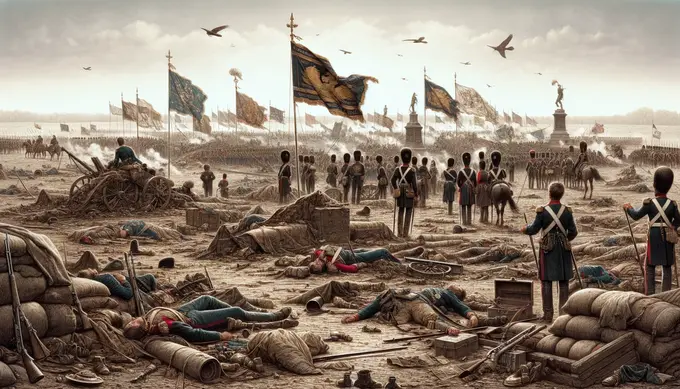Battle of Waterloo was more than just a military engagement; it was a turning point that marked the end of one era and the beginning of another in European history. Its impact went far beyond the battlefield, influencing political, social, and cultural landscapes across the continent. The battle’s legacy continues to be a subject of study and fascination, symbolizing the culmination of the Napoleonic Wars and the reshaping of Europe.
The Battle of Waterloo, fought on June 18, 1815, stands as one of history’s most significant military engagements. It marked the end of Napoleon Bonaparte’s rule and reshaped the European political landscape. This article delves into the detailed timeline of the battle, the key participants involved, and the implications it had on Europe.
Prelude to the Battle
The Return of Napoleon
In March 1815, Napoleon escaped from exile on Elba and returned to power in France, initiating a period known as the Hundred Days. This resurgence alarmed the powers of Europe, leading to the formation of a Seventh Coalition, comprising Britain, Prussia, Russia, Austria, and others, determined to end his rule.
The Forces Gather
The Duke of Wellington, leading an Anglo-Allied army, and Prussian Field Marshal Gebhard Leberecht von Blücher gathered their forces in Belgium. Napoleon aimed to divide these two armies and defeat them separately.
 Battle of waterloo map by Mapmaker.
Battle of waterloo map by Mapmaker.
The Battle Unfolds
June 16, 1815: The Battle of Quatre Bras and Ligny
Just two days before Waterloo, two significant battles occurred. The Battle of Quatre Bras involved Wellington’s troops clashing with Napoleon’s forces, while the Battle of Ligny saw Napoleon achieving a costly victory against the Prussians.
June 18, 1815: The Battle of Waterloo
Morning
- The Battlefield: The battle took place near the village of Waterloo, south of Brussels. The terrain was marked by a gentle ridge, where Wellington’s army was positioned.
- Initial Moves: The battle commenced around 11 am. Napoleon delayed the start, hoping the ground would dry after the previous night’s heavy rain.
Midday
- French Attacks: Napoleon launched a series of attacks on Wellington’s line, focusing on the Château of Hougoumont. Despite intense fighting, the Allied position held.
- Prussian Arrival: By mid-afternoon, the Prussians, having regrouped from their defeat at Ligny, began to arrive on the battlefield, applying pressure on Napoleon’s right flank.
Late Afternoon to Evening
- The Turning Point: In the late afternoon, Napoleon ordered the Imperial Guard, his most elite troops, to attack the center of Wellington’s line. This move, intended as decisive, failed spectacularly.
- Allied Counterattack: Following the repulse of the Imperial Guard, Wellington ordered a general advance. The French army, demoralized and under pressure from both the Anglo-Allies and the Prussians, began to disintegrate.
Participants of the Battle
Key Figures
- Napoleon Bonaparte: The French Emperor, a military genius seeking to reclaim his dominance in Europe.
- Duke of Wellington: The British general, known for his defensive tactics and steady leadership.
- Field Marshal Blücher: The Prussian commander, whose timely arrival played a crucial role in the outcome.
The Armies
- French Army: Consisting of veterans from Napoleon’s previous campaigns.
- Anglo-Allied Army: A diverse force including British, Dutch, Belgian, and German troops.
- Prussian Army: Commanded by Blücher, crucial in the latter stages of the battle.
The Aftermath and Implications
Napoleon’s Downfall
The defeat at Waterloo ended Napoleon’s rule. He abdicated days later and was exiled to Saint Helena, where he spent the rest of his life.
Political Reconfiguration
The Congress of Vienna, already in session at the time of Waterloo, redrew the map of Europe. The battle ensured a balance of power system, designed to prevent a single power from dominating Europe again.
Legacy
Waterloo became synonymous with a decisive, final defeat. It also marked the end of a series of wars that had convulsed Europe since the French Revolution.
Cultural Impact
The battle has been immortalized in literature, art, and folklore, becoming a benchmark for military strategy and leadership studies.


 Battle of waterloo map by
Battle of waterloo map by 





